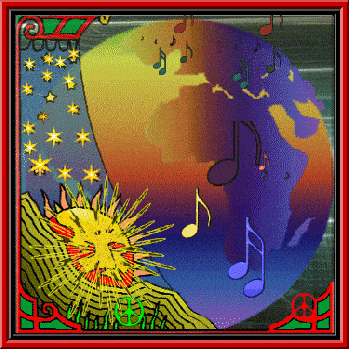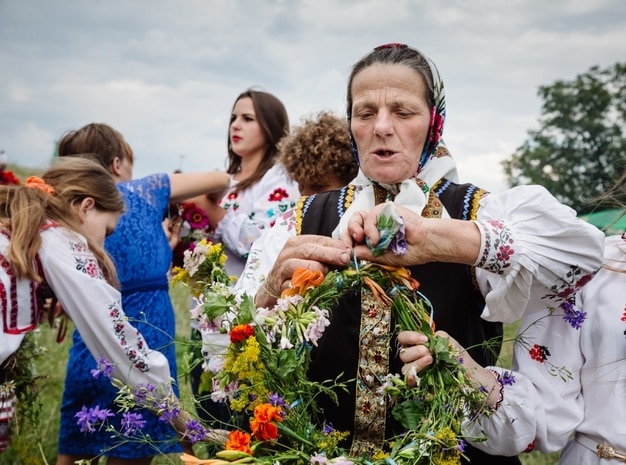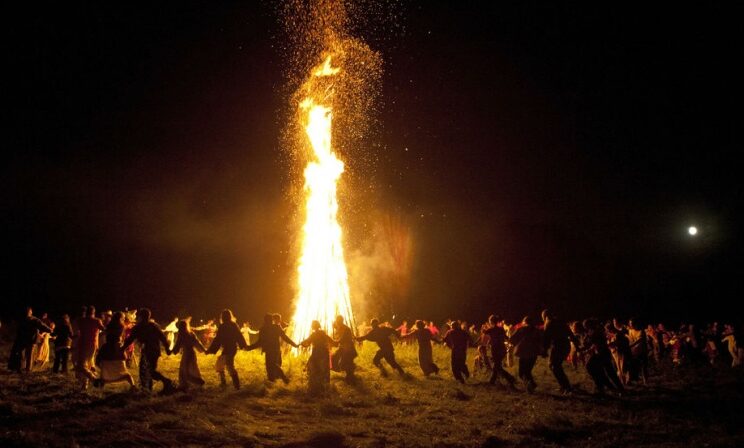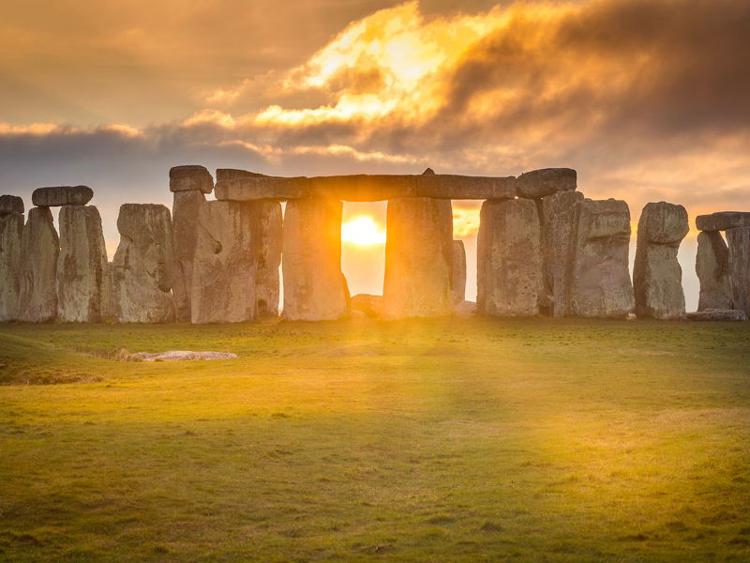As you can probably guess, while one pole has its Summer Solstice the other is having its chilly winter version. The Summer Solstice marks the longest day, when the sun is at its highest point. In the case of the Northern hemisphere, that is usually between the 20th and 22nd of June — i.e. right now!
When The Sun Stands Still
During this window the sun appears to freeze in the sky. This is where the name originates — deriving from the Latin ‘sol’ (sun) and ‘sistere’ (standing still). Like a lot of celestial and astrological phenomena this was very important in ancient times. Across the world societies celebrated the longest day for the promise of a good harvest, fertility, and renewal for the year ahead. Today, many of these celebrations endure — however, most of us are less concerned with appeasing harvest gods, or some such.
As purveyors of Mother Nature’s most spiritual of gifts, the magic mushroom and truffle, we of course love any celebration that is connected to our beautiful planet and its movements. Also any excuse to get out and enjoy the sunshine! So, we’ve made a list of our favourite ways to enjoy the Summer Solstice this year. Check it out sun-children!
Collect Flowers and Dance
Ok, maybe it sounds a bit hippy-dippy to our modern ears, but this is a most ancient way of celebrating the solstice (and what’s wrong with a bit of hippy-dippy anyway?) Revellers would collect the prettiest of summer flowers, and make head-wreaths and decorations with them, dancing in the extended daylight.
The Native American Sioux used to perform a ceremonial sun dance around a tree, dressed in sacred colours. In Romania, they would perform the drăgaica, where young girls dance around another dressed as a traditional bride. There are examples of midsummer jigs and grooves all around the world. Check them out, or invent your own!
And as for the plants, if you wanna get extra witchy, you could collect the sacred herbs of the season. Ancient Celts believed that plants and herbs were more potent during the Solstice than any other time of year; these included St. John’s Wort, Fern, Vervain, Yarrow, and Mugwort.
Light A Bonfire
In many traditional Summer Solstice celebrations a roaring bonfire is a must-have. From Sweden’s Midsommer pires to Spain’s bonfires, fireworks and beacons lit across the mountains. The idea is to strengthen and encourage the sun as we head towards winter again. A popular (but perhaps slightly dangerous) tradition in countries including Latvia, Lithuania, Spain, Croatia, Estonia and Russia is jumping over your bonfire. This represents purification and fertility, as well as the passage through to the new season. In ancient China couples would leap as high as they could over the bonfire to predict how tall the crops would grow. If you can’t manage a bonfire, you could light a candle and focus on its flickering flame while you dream of the new season’s beginnings.
Take A Magic Mushroom Trip
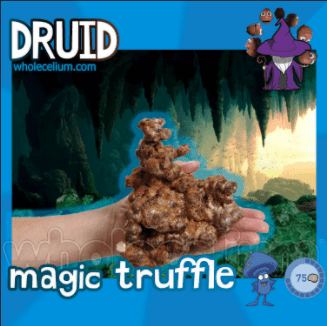
In our minds, it’s always a good time to go on a psychedelic journey. But to do so during the solstice is perhaps double magic. Tripping on magic mushrooms or truffles always leaves you feeling connected to the world around you — why not be reborn with the season? The new insights you discover might bring a whole new season in you. Maybe you wanna trip outside to fully enjoy nature. Whether alone, or with a group of solstice companions, you will truly feel that you and the Earth are one. (There are even studies to back it up!)
Stonehenge Live Stream
If you Google ‘Summer Solstice’ — after diagrams of the sun and the Earth’s poles — you will always see a picture of Stonehenge, the mysterious, prehistoric monument on Salisbury Plain, England. With deep spiritual associations, a druidic history, and still no real idea of how they built the darn thing, the towering bluestones of the ‘henge make it a perfect setting for galavanting about in white robes as the sun sets. At dawn on the summer solstice, the sun rises behind Stonehenge’s Heel Stone, which is placed on the avenue leading up to the iconic Stone Circle. The sun’s morning rays directly illuminate the center of the monument.
Usually, Stonehenge hosts a huge solstice gathering, which neo-pagan sun-children from all around the world clamour to attend. However, due to covid-19, this year the sunset and sunrise at the World Heritage Site will be livestreamed on the English Heritage social media channels. A small number of people (of the neo-pagan and druidic community, natch) will be allowed to visit the site, so you can watch some solstice-tastic action unfold (and perhaps use them for scale). There will also be some special interviews and music. Check it out!
Set New Goals
In some cultures, such as the Ancient Egyptians, the summer solstice was actually the start of the new year. For the Egyptians this was also tied to the fact that soon after the midsummer the Nile would have its yearly flood, thus nourishing the land. However, why not treat the summer solstice this year as a ‘new year’ of sorts. The solstice is known to be a time to let out old dark energy, and be revitalised with fresh, bright light after all.
Set yourself 3 new goals for the summer/ the rest of the year. It doesn’t have to be big or lofty, rather, choose something that will add light to your life. It is also a good time to review the things you have done well in the first half of the calendar year. Look back on your achievements, and use them to spur you on to your future goals.
How do you like to celebrate the summer solstice? Let us know in the comments below!

